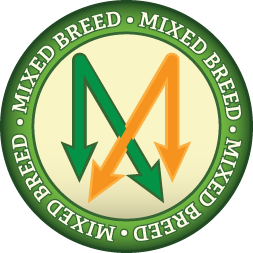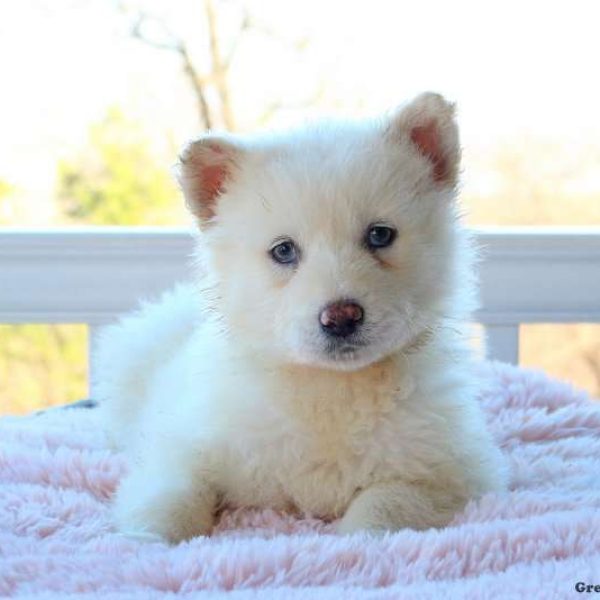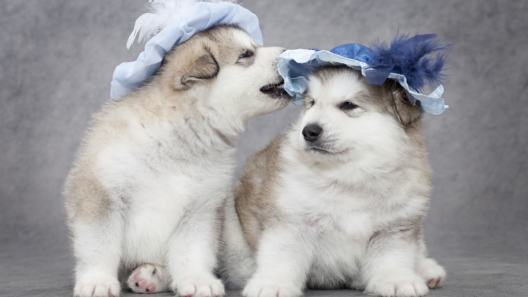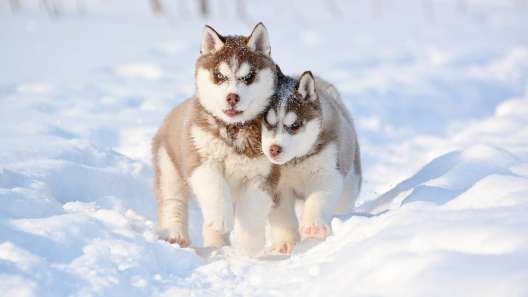
-
Activity Level:
high
-
Shedding Level:
high
-
Grooming Level:
high
-
Trainability:
high
-
Good for Novice Owners:
low
-
Adaptability:
low
-
Kid/Pet Friendly:
often
-
Prey Drive:
high
-
Watchdog:
very alert
- Average Size: Large
- Average Lifespan: 10-14 years
Alaskan Malamute Mix Dog Breed Information
Overview
Temperament
Adaptability
Health
Owner Experience
Grooming
Activity Level
Size
Life Span
The Alaskan Malamute Mix is a cross between an Alaskan Malamute and another dog breed. As a mixed-breed dog, an Alaskan Malamute Mix can take on any combination of characteristics from one or both of the parent breeds.
From the Alaskan Malamute side, you can expect an energetic, high-energy family dog that is loyal, a bit stubborn, playful, and affectionate with their families. The other parent breed may affect these traits and add some of their own, so it’s important to ask the breeder about both of the parent breeds in the cross.
Alaskan Malamutes are known for being excellent family dogs that are loyal and affectionate with a playful, energetic personality. You should be able to expect something similar from an Alaskan Malamute Mix.
They tend to get along with children and other dogs. Alaskan Malamutes do have a high prey drive, so an Alaskan Malamute Mix may need some extra socialization if there are smaller pets in the household.
Alaskan Malamutes are moderately adaptable dogs. They grow to be large dogs with a lot of energy, so they do not tend to do well in apartments. Their high prey drive and urge to wander also means they should only be let off-leash in securely fenced areas.
As such, they tend to prefer homes with fenced-in yards where they can run. As an arctic breed, they tend to prefer colder weather are one of the dog breeds that love winter. They also do not like to spend long periods of time alone.
The other parent breed could affect this in an Alaskan Malamute Mix. So, you should talk to the breeder about the other parent breed, but also be prepared for a moderately adaptable dog with these traits.
Although a mixed-breed dog can sometimes win the genetic lottery and inherit no health conditions common to either parent breed, this is not a guarantee. An Alaskan Malamute Mix can inherit health conditions common to one, both, or neither of the parent breeds.
From the Alaskan Malamute side, potential health conditions to be aware of include luxating patella, retinol atrophy, and day blindness. As a larger dog breed, they are also more prone to bloat. Bloat in dogs can quickly become dangerous if gastric torsion occurs, so it’s important to know how to prevent it and the signs it’s time to go to the vet.
It’s important to talk to the breeder about the other parent breed in the cross. Because reputable breeders screen their stock to avoid passing issues to puppies, you should be able to ask about the health and genetic history of both of the parent breeds.
Although an Alaskan Malamute is highly-intelligent, likes to work, and often enjoys training, they are also notoriously stubborn with an independent nature and a lot of energy. Because of this, they tend not to be a good fit for first-time dog owners.
Novice owners can be a good fit, but training classes are highly recommended. The other parent breed in the cross could make an Alaskan Malamute Mix less stubborn and more trainable, but this isn’t a guarantee. Regardless of owner experience, puppy training classes are often still a good idea as they often offer opportunities to socialize a puppy.
An Alaskan Malamute Mix can end up with a coat similar to either one of the parent breeds or a coat that is a combination of both of them. If they end up with an Alaskan Malamute coat, it will be thick and fluffy. They’ll shed year-round and even more during the spring when they shed their winter coat. Daily brushing and a bath every 6-8 weeks are enough to keep an Alaskan Malamute coat looking great.
Regardless of coat type, you will also need to care for your Alaskan Malamute Mix’s nails, ears, and teeth. Monthly nail trimming is usually sufficient to keep nails from growing too long. But, you may need to cut your dog’s nails more often if they grow quickly or aren’t wearing down as much naturally.
Checking ears weekly and carefully cleaning your dog’s ears as needed can help prevent ear infections. When you look at your dog’s ears, you’re checking to make sure they are clean, dry, and free of debris or pests. If you see irritation, redness, excess wax, discolored or smelly discharge, or something else that seems concerning, it’s time to visit the vet.
It’s also important to take care of your dog’s teeth and gums. Dental care for dogs is often overlooked, which is why gum disease is one of the most common health issues in dogs. By brushing your dog’s teeth or using an enzyme toothpaste every day, you can help prevent painful dental diseases like gum disease, tooth decay, and tooth loss later in life. You can also use vet-approved dental hygiene chews or treats and a “dental care diet” formulated for your dog to supplement your efforts.
Alaskan Malamutes are known for being high-energy working dogs that need a lot of daily exercise and a job to do to be happy and healthy. Although the other parent breed in the cross may affect this, you should be prepared for a potentially high-energy dog with an Alaskan Malamute Mix.
Should this mixed breed take after their Alaskan Malamute parent, they’ll need daily walks plus some playtime, time to run, and extra activity. But, Alaskan Malamutes are also athletic and versatile dogs, so they can often adapt to a wide variety of activities. Your Alaskan Malamute Mix will likely be happy to tag along with whatever you’re doing as long as it means they get to be active while spending time with you.
A fully-grown Alaskan Malamute usually stands 23-25 inches tall and weighs 75-100 pounds. The other parent breed in the cross could affect this in an Alaskan Malamute Mix.
You can get a better idea of what size to expect in your Alaskan Malamute Mix puppy by asking the breeder about the other parent breed and also meeting the mother dog.
Alaskan Malamutes generally live 10-14 years. Although the other parent breed in the cross could shorten or extend this a little, you can likely expect a similar life span in an Alaskan Malamute Mix.









